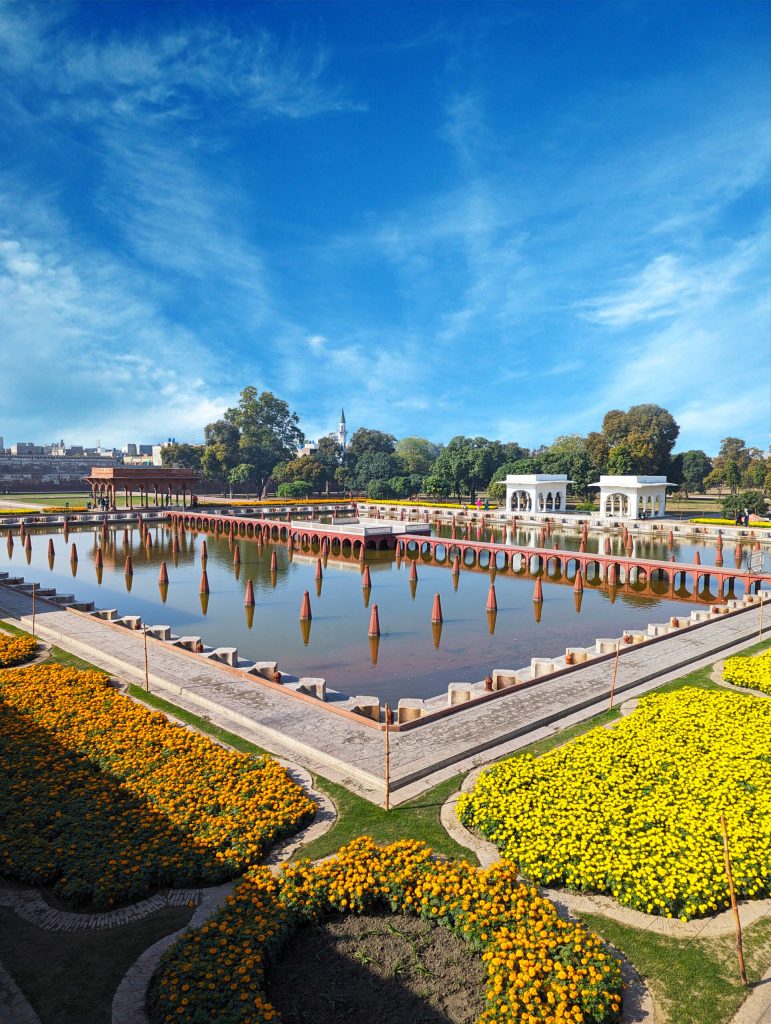Shalimar Gardens
The Shalimar Gardens (Punjabi, Urdu: شالیمار باغ) are a vast Mughal garden complex. The Gardens were designed as a Persian paradise garden with the aim of creating an earthly utopia–a representation of paradise on earth–where humans and nature harmoniously coexist. The name "Shalimar" comes from the Arabic expression Shah al-‘imarat (Master of Buildings). Construction of the gardens commenced in 1641 during the rule of Emperor Shah Jahan and was completed in 1642. In 1981, the Shalimar Gardens were recognized as a UNESCO World Heritage Site for representing the pinnacle of Mughal garden design. The gardens are renowned for their gravity-fed water system, which works by channelling water from a reservoir located at a higher elevation to the various fountains and cascades throughout the gardens and includes numerous canals, fountains, and cascades. The design is inspired by Persian gardens, with a central axis that divides the garden into two symmetrical halves. The gardens are divided into three terraces, each with a distinct character. The upper terrace is a formal garden with geometric patterns and flower beds. The middle terrace is a more informal garden with a pool and fountains. The lower terrace is a pleasure garden with a large reflecting pool and pavilions. The water system is designed to ensure a constant and reliable supply of water to the fountains, even during periods of drought. This is achieved through a series of reservoirs, channels, and sluices that regulate the flow of water. This system also works to prevent waterlogging and erosion, which can be problems in gardens that rely on artificial irrigation. The Gardens are adorned with exquisite Mughal architecture, including pavilions, kiosks, and gateways. The most notable structure is the Farahbakhsh, (‘Garden of Delight’), a marble pavilion located at the heart of the gardens. The pavilion is decorated with intricate floral and geometric patterns and offers stunning views of the gardens. The middle and lower terraces were called Faizbakhsh (‘Garden of Bounty’).
Artists
Special thanks to the Walled City of Lahore Authority (WCLA)
Image Source: Walled City of Lahore Authority

